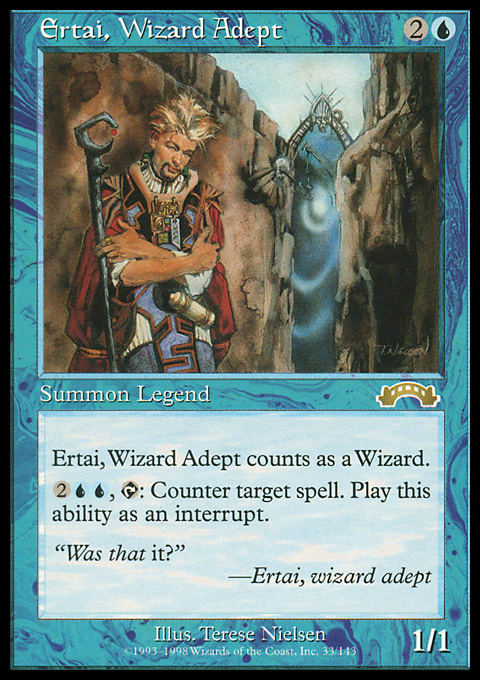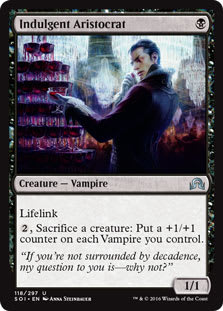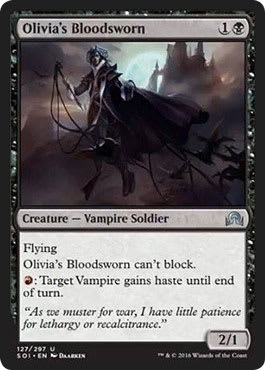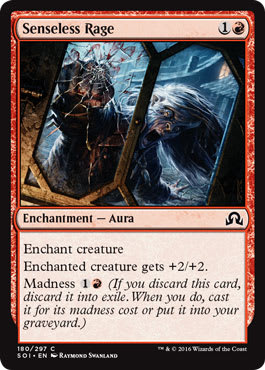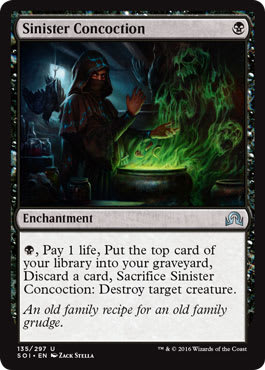Like so many longtime Magic players, I have found it desirable to leave the game for a time. Sometimes, I’ve thought those breaks were permanent, like just after The Dark and again right before Mercadian Masques (bullet dodged! I’ll always be able to treasure the best of the Weatherlight Saga without the drudging morass it would eventually become).
Other times, I knew the breaks to be temporary, such as in 2013 when I bought my friendly local gaming shop and began to run that in addition to my day job. At that point, I’d hit my deepest level of involvement in the game, having started up a website devoted to the breadth of history of preconstructed Magic in addition to writing about the topic on Quiet Speculation and here on Gathering Magic.
Why preconstructed Magic? It’s a curious niche for some, though as Magic players we all know, one of the secrets to its incredible success and longevity lies in just how approachable it is. We have Standard and Legacy, Modern and Pauper, Commander and Draft . . . so why not Preconstructed?
My love of Preconstructed Magic happened quite by accident. When I left Magic in 1999, it took me a decade to return with Zendikar. I discovered a lot had changed in the game, being initially baffled by cards like Equipment and Planeswalkers. I was curious about how the game had changed and involved in my time away, but I didn’t want to spend truckloads of money buying ten years’ worth of sets.
Enter the Theme Deck!
Theme decks, I quickly realized, were the “museum pieces” of Magic. Each centered on a set of themes or mechanics that highlighted the major aspects of the sets they came from. By that point, I was hooked, and Ertai’s Lament—the self-styled “Home of Preconstructed Magic”—was born.
One of the most popular features on the site was a series of articles geared at the new, novice, returning, or casual Magic player I called “Ertai’s Meddlings.” In these articles, I’d take an Intro Pack deck and walk through how I’d modify and improve it in a way that was consistent with its themes. Because I wanted to keep it affordable and accessible, there were two “Golden Rules.”
First, I could only add cards that were commons or uncommons. Once you delve into unlimited access to rares and mythics, it really becomes a completely different thing. I wanted people to be able to tune their decks with the cards they’d have easy access to, the stuff they’d reliably find in their boosters or that could be acquired cheaply.
Second, I could only draw upon sets that were already included in the Intro Pack I was tuning. If a set can’t reinforce its theme within the set, it really isn’t a theme. I’d encourage everyone to tune to their hearts’ content with cards from whatever sets they’d like, but again, accessibility is key. Let’s build with what we know we have!
I’m delighted to have returned not only to Magic (I sold the store after two years when my daughter Ruari was born so that I’d have more time for my growing family), but also to return to Gathering Magic! Each set, I’ll be breaking down the different Intro Pack decks to see what works—and what doesn’t—before building them back up into something better.
Over the past couple years, I’ve heard from many that having four children ages five and under is madness, so that seems to be a great place to start! We begin my new series on Gathering Magic with a look at Vampiric Thirst, so grab a chalice of your favorite claret and let’s begin.
Vampiric Thirst ? Shadows over Innistrad Intro Pack | Wizards of the Coast
- Creatures (21)
- 1 Mad Prophet
- 1 Markov Dreadknight
- 1 Olivia's Bloodsworn
- 2 Bloodmad Vampire
- 2 Incorrigible Youths
- 2 Indulgent Aristocrat
- 2 Ravenous Bloodseeker
- 2 Sanguinary Mage
- 2 Stromkirk Mentor
- 2 Twins of Maurer Estate
- 2 Vampire Noble
- 2 Voldaren Duelist
- Spells (14)
- 2 Fiery Temper
- 1 Burn from Within
- 1 Macabre Waltz
- 1 Murderous Compulsion
- 2 Alms of the Vein
- 2 Malevolent Whispers
- 2 Tormenting Voice
- 1 Creeping Dread
- 1 Senseless Rage
- 1 Sinister Concoction
How it Works
Vampiric Thirst wraps a tribally themed skin around a mechanical core. It’s easy to overlook the priorities here given that there are so many Vampires in the deck, but a count of how many cards actually care about Vampires finds five of them (two each of Indulgent Aristocrats and Stromkirk Mentor, plus an Olivia's Bloodsworn). You won’t confuse this with a deck from Lorwyn, where the success of the deck was directly attributable to the number of tribal interactions you could sustain.
It’s also important to consider the deck’s philosophy. At its most essential, madness is a cost-reduction mechanic. That doesn’t necessarily mean mana—being able to cast a sorcery or creature at instant speed is a reduction in the “cost” of time. So the advantage the deck wants to capitalize on is twofold: first, playing cards more cheaply or more quickly, and second, to abuse any discard effects by turning the disadvantage of “discard a card” into an advantage.
The First Cut
One of the ways an Intro Deck instructs newer players to Magic is by guiding that player to improve the deck on the player’s own. There are a few ways it does this, but the main levers it uses are quantity and diversity. You won’t typically see four of any card in an Intro Pack, and even seeing a three-of is a fairly uncommon thing. The idea here, of course, is that if a player playing an Intro Pack really likes a certain card, that player is going to want to add more copies to the deck in order to play it more frequently.
Hand in hand with this is diversity, the importance of having a large number of different cards in the deck. This is another reason you’ll see a lot of singletons or two-ofs: Wizards wants players playing Intro Packs to experience a variety of cards, since what one player loves might be quite different from another player, and they want a fairly wide net. This also impacts replayability in much the same was as Duel Decks. By having more different cards, they expose the pilots to a number of different outcomes.
For our Meddling, though, this means we need to be fairly aggressive with our pruning shears, to make way for the eventual deck we want to create. The Indulgent Aristocrat is our first cut. Although it’s among the few cards with tribal synergy, the cost is a bit high (losing a creature), and lifelink is not an ability that does much to support an aggressive strategy. The Sanguinary Mage, meanwhile, has the promise of growth thanks to prowess, but on its own, you’re paying 2 mana for a 1-power creature. That, too, just isn’t aggressive enough to be considered.
If we’re looking for offensively minded power, that certainly would recommend the Vampire Noble and Stromkirk Mentor, each of which boasts a power in excess of its toughness. Nevertheless, we’re cutting these as well. The Noble simply doesn’t bring enough to the table, and because we want to keep this loaded with early offensive threats, almost everything that costs 4 or more is getting the axe.
That sees out the Mad Prophet, Voldaren Duelist, and Twins of Maurer Estate. The Twins on first blush seem to be just the kind of card we want. Ordinarily costing 5 mana, we can use madness to gain quite the hefty discount. The only problem with the Twins, then, isn’t that they’re not good enough, but rather there’s already something better: Incorrigible Youths. The converted mana cost is exactly the same, and the madness cost is as well. But we give the nod to the Youths because they pack a stronger punch (4 power instead of 3) and can attack on the first turn thanks to haste.
Rebuilding the Army
We’ll turn our attention to the noncreature support suite shortly, but first, we’ll want to backfill the newly vacated positions in our troops. Now that we’ve purged the deck’s creatures, what did we keep?
Well, for one thing we want to max out Olivia's Bloodsworn. An evasive 2/1 for 2 mana is something we’d keep regardless, but being able to give any Vampire haste just sweetens the deal. They can’t block, but that’s not much of a drawback since we’re going to want to be turning them sideways turn after turn.
The next keeper is the Ravenous Bloodseeker, which we’ll also want to max out to four copies. While the Bloodseeker at first seems to have the same drawback as the Sanguinary Mage (1 power), a madness deck needs a certain number of discard outlets to punch above its weight. Bloodseekers are great for this—there’s no additional cost associated with the ability, and having the option to swap into a 3/1 rather than a 1/3 helps get additional damage in.
We’re also keeping the pair of Bloodmad Vampires. A 4/1 for 2 mana (if we can bring it out through madness) that has the “Slith mechanic” associated with Vampires from the original Innistrad that gives it the potential for further growth. They still trade out unfavorably with almost any 1-drop, so two copies will be all we need. Further, if things go south, these make very good deterrents for your opponent to attack into while you buy time to regroup.
We’re also going to be keeping the two Incorrigible Youths, as discussed above. Finally, there’s the Markov Dreadknight, the deck’s premium rare card. In Meddlings, we almost never cut the rares—they tend to be pretty splashy and/or fun-to-play cards even if they’re not perfect fits for the most competitive version of the deck. The Dreadknight is expensive, but it’s a terrific closer here.
Now’s the fun part: What do we add? We want to keep the deck tied in with its two themes—Vampire tribal and madness-exploiting—and the good news is we have a few options here. First up is the Insolent Neonate. This gives us a nice 1-drop option that’s difficult to block thanks to menace. In addition, it’s a discard outlet that helps us use madness when we want to, and it effectively cycles itself in the process. That’s a great package, and four of these are an easy add.
The next add is a double-faced card, the Heir of Falkenrath. On account of printing costs, you aren’t going to see DFC’s in Intro Pack–level products, which is a shame (it’s an exception to the “museum pieces” factor mentioned above). The Heir is a perfect card for this deck. She comes in as a 2-mana 2/1, which is acceptable in black, and is another discard outlet for madness. Doing so turns her into a 3/2 with flying, and for 2 mana, what more could you ask for? We’ll take four, please.
Calling for Backup
Just as with the creatures, we want to wield a wicked scalpel on the noncreature support suite and then fill it back in with some reliable staples to help the deck cross the finish line. Most of the time, this boils down to clearing out the one-of or two-of novelty effects and packing in some more removal. In an aggressive creature deck like this one is shaping up to be, the ability to clear any roadblocks through the red zone is critical.
That means minor effects are right out. Gone are Macabre Waltz, Alms of the Vein, and Malevolent Whispers. Senseless Rage—an Aura that doubles as a combat trick through madness—is just not quite enough when it’s preferable to kill a potential blocker rather than an actual one. Creeping Dread is a 4-mana enchantment that does absolutely nothing when it touches down, and we’ve better discard outlets to choose from. Creeping Dread doesn’t care if we only have one card in hand and it doesn’t have madness, and we want more control over our choices.
So what are we looking for here? Well, again, if most of our effectiveness is in the red zone, we’ll want ways to keep the lanes clear. Our creatures tend toward the smaller side, so we need to ensure their survival turn after turn no matter what our opponent drops down.
The first card here is Fiery Temper, a snap four-of if ever there was one. This card—the madness equivalent of Lightning Bolt—is so strong that it almost didn’t see reprinting in Shadows over Innistrad. We’re glad it did, and it also gives us some reach to finish off a wounded opponent.
Next up is a play set of Lightning Axe. The stock deck carried no copies, but this is a solid bit of burn. Although unlike Fiery Temper, this burn is limited to creatures, and 5 damage is enough to kill off almost anything that gets in our way. The fact that we can play it without having to discard—albeit expensively—makes it even more useful late in the game when we may have extra mana sitting around.
That’s a nice burn suite, but we still would like a little more removal. The goal here is that we have some form of removal every time we start the game with seven cards in the opening grip. A curious spell, but one that fits here, is Sinister Concoction. It’s a cheap piece of flavorful removal the most painful cost of which is discarding a card, but again, thanks to madness, that’s as much a blessing as it is a curse. We’ll take a trio of these, giving us eleven ways to make sure the attack lanes are open for business.
Burn from Within is a no-brainer since it’s the deck’s second rare and a wonderful update of Disintegrate. This is a finisher all on its own, a card you’ll always be delighted to see. Even if your Vampires can’t quite seal the deal on their own, you can always tap out for this and burn out your opponent.
The tribally themed enchantment Stensia Masquerade seems good enough to add a pair of here. It gives all of your Vampires the same ability as the Bloodmad Vampires (the “Slith” mechanic), so there’s little lost to redundancy. It also grants them first strike, which will steal you some kills on occasion. Having a virtual combat trick also keeps your opponent guessing when that player goes to declare blockers, a bit of uncertainty that can also give you an advantage over a deck that had only straightforward options.
Finally, we’ll be keeping the pair of Tormenting Voice. It’s one last discard outlet, and card-draw to boot—just the thing to refill the hand. Running out of gas is always a risk of cheap, aggressive decks, so being able to grab an extra card or two can go a long way.
With the deck split almost fifty-fifty between black and red mana symbols (slight edge to the latter), that leaves our Meddled version of Vampiric Thirst looking like this:
Vampiric Thirst, Meddled ? Casual | Jay Kirkman
- Creatures (21)
- 1 Markov Dreadknight
- 2 Bloodmad Vampire
- 2 Incorrigible Youths
- 4 Heir of Falkenrath
- 4 Insolent Neonate
- 4 Olivia's Bloodsworn
- 4 Ravenous Bloodseeker
- Spells (16)
- 4 Fiery Temper
- 4 Lightning Axe
- 1 Burn from Within
- 2 Tormenting Voice
- 2 Stensia Masquerade
- 3 Sinister Concoction
Thanks for joining me on the return of Ertai’s Meddling! I hope you’ve enjoyed updating Vampiric Thirst with me. As always, your mileage may vary, and I'd love to hear what you'd do differently. Is there anything you can think of that might tighten up the deck? Got a version that includes more Standard cards, or perhaps a few from Innistrad block? Let me know in the comments below!














